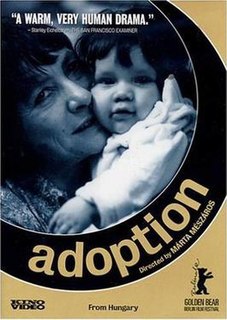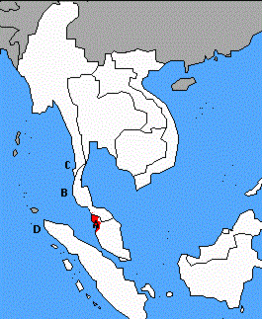Kati language may refer to:
- Muyu language, an Ok language of West Papua
- Kata-vari dialect, spoken by the Kata in parts of Afghanistan and Pakistan
Kati language may refer to:
Kata is a martial arts term referring to a pattern of defense-and-attack. Kata may also mean:

Lake Eyre, officially known as Kati Thanda–Lake Eyre, is an endorheic lake in east-central Far North South Australia, some 700 km (435 mi) north of Adelaide. The shallow lake is the depocentre of the vast endorheic Lake Eyre basin, and contains the lowest natural point in Australia at approximately 15 m (49 ft) below sea level (AHD), and on the rare occasions that it fills completely, is the largest lake in Australia covering an area up to 9,500 km2 (3,668 sq mi). When the lake is full, it has the same salinity level as seawater, but becomes hypersaline as the lake dries up and the water evaporates.

The Nuristanis, also known as Kafiristanis, are an ethnic group native to the Nuristan Province of northeastern Afghanistan, whose languages comprise the Nuristani branch of Indo-Iranian languages. A small community of Nuristanis are also settled in the neighboring Chitral region of the Khyber Pakhtunkhwa province of Pakistan.
The Katir also are a Nuristani tribe in Afghanistan and Pakistan.

Kata is a Japanese word meaning "form". It refers to a detailed choreographed pattern of martial arts movements made to be practised alone. It can also be reviewed within groups and in unison when training. It is practised in Japanese martial arts as a way to memorize and perfect the movements being executed. Korean martial arts with Japanese influence use the derived term hyeong and also the term pumsae.
Kata Kolok, also known as Benkala Sign Language and Balinese Sign Language, is a village sign language which is indigenous to two neighbouring villages in northern Bali, Indonesia. The main village, Bengkala, has had high incidences of deafness for over seven generations. Notwithstanding the biological time depth of the recessive mutation that causes deafness, the first substantial cohort of deaf signers did not occur until five generations ago, and this event marks the emergence of Kata Kolok. The sign language has been acquired by at least five generations of deaf, native signers and features in all aspects of village life, including political, professional, educational, and religious settings.
Kata-vari is a dialect of the Kamkata-vari language spoken by the Kata in parts of Afghanistan and Pakistan. The most used alternative names are Kati, Kativiri or Bashgali.
Kamkata-vari is the largest Nuristani language. It contains the main dialects Kata-vari, Kamviri and Mumviri. Kata-vari and Kamviri are sometimes erroneously reckoned as two separate languages, but according to linguist Richard Strand they form one language.

Adoption is a 1975 Hungarian drama film directed by Márta Mészáros. It tells the story of Kata, an unmarried female factory worker, who becomes interested in neglected children and tries to adopt one. It was entered into the 25th Berlin International Film Festival, where it won the Golden Bear. The film was also selected as the Hungarian entry for the Best Foreign Language Film at the 48th Academy Awards, but was not accepted as a nominee.

Kate is a feminine given name. It is a short form of multiple feminine names, most notably Katherine but also Caitlin and others.

Kedah Malay or Kedahan or as it is known in Thailand, Syburi Malay is a variety of the Malayan languages mainly spoken in the northwestern Malaysian states of Perlis, Kedah, Penang, and northern Perak and in the southern Thai provinces of Trang and Satun. The usage of Kedah Malay was historically prevalent in southwestern Thailand before being superseded by the Thai language. Enclaves of Kedah Malay can be found in Kawthaung District in Myanmar; Ranong and Krabi in upper southern Thailand; Jaring Halus, Langkat and Acheh in Sumatra, Indonesia and up north in Bangkok, central Thailand, where most of the Kedah Malay speakers are descendants of historical settlers from Kedah.
Ananku (安南空) is a kata from Okinawan karate. Its history in Okinawan martial arts is relatively short in comparison to other kata as it was composed by Chotoku Kyan. Its meaning is "Light from the South" or "Peace from the South", as it is thought to originate when Kyan returned from a trip to Taiwan.
Kati is a commune and town in Koulikoro, Mali.
Butterfly is a two-player abstract strategy game. It is related to draughts and Alquerque. It is a similar game to Lau kata kati from India which may suggest a historical connection between the two games.

Lau kata kati is a two-player abstract strategy game from India, specifically from Lower Bengal, and also from United Provinces, Karwi Subdivision where it is called Kowwu Dunki, and it was described by H.J.R. Murray in A History of Board-Games Other Than Chess (1952). The game is related to draughts and even more so to Alquerque. Pieces are captured by leaping over them. The board is a pattern of two triangles joined together at a common vertex with further lines subdividing them. It is the same game as Butterfly (game) from Mozambique, which suggests a historical connection between the two games. Lau kata kati belongs to a specific category of games called Indian War-games, and the other games in this category are Dash-guti, Egara-guti, Pretwa, Gol-skuish. All Indian War-games have one important thing in common, and that is that all the pieces are laid out on the patterned board, with only one vacant point in the center. This forces the first move to be played on the central point, and captured by the other player's piece.
Dash-guti is a two-player abstract strategy board game from India, specifically from Central Provinces, United Provinces, Karwi Subdivision where it is called Kowwu Dunki which is the same name given to another similar game called Lau kata kati, and it was described by H.J.R. Murray in A History of Board-Games Other Than Chess (1952). The game is related to Draughts and even more so to Alquerque. Pieces are captured by leaping over them. Dash-guti consists of a Lau kata kati board, but with the addition of two line segments connected to the vertex but exterior to both triangles. Dash-guti belongs to a specific category of games called Indian War-games, and the other games in this category are Lau kata kati, Egara-guti, Pretwa, Gol-skuish. All Indian War-games have one important thing in common, and that is that all the pieces are laid out on the grid patterned board, with only one vacant point in the centre. This forces the first move to be played on the central point, and captured by the other player's piece.
Egara-guti is a two-player abstract strategy game from India, specifically from Central Provinces, and it was described by H.J.R. Murray in A History of Board-Games Other Than Chess (1952). The game is related to Draughts and even more so to Alquerque. Pieces are captured by leaping over them. Egara-Guti consists of a Lau kata kati board, but with the addition of two lines connecting the two triangles and running through them. Egara-guti belongs to a specific category of games called Indian War-games, and the other games in this category are Lau kata kati, Dash-guti, Pretwa, Gol-skuish. All Indian War-games have one important thing in common, and that is that all the pieces are laid out on the grid patterned board in the beginning, with only one vacant point in the center. This forces the first move to be played on the central point, and captured by the other player's piece.

Kati Piri is a Hungarian-born Dutch politician serving as a member of the House of Representatives since 2021. A member of the Labour Party (PvdA), she previously was a Member of the European Parliament (MEP) within the Progressive Alliance of Socialists and Democrats from 2014 until 2021.

Kata Csizér is a Hungarian linguist. She is currently a professor at the Department of English Applied Linguistics of the School of English and American Studies at Eötvös Loránd University, Hungary. Her research focuses on applied linguistics with a special focus on motivation in second-language learning and teaching students with special needs.